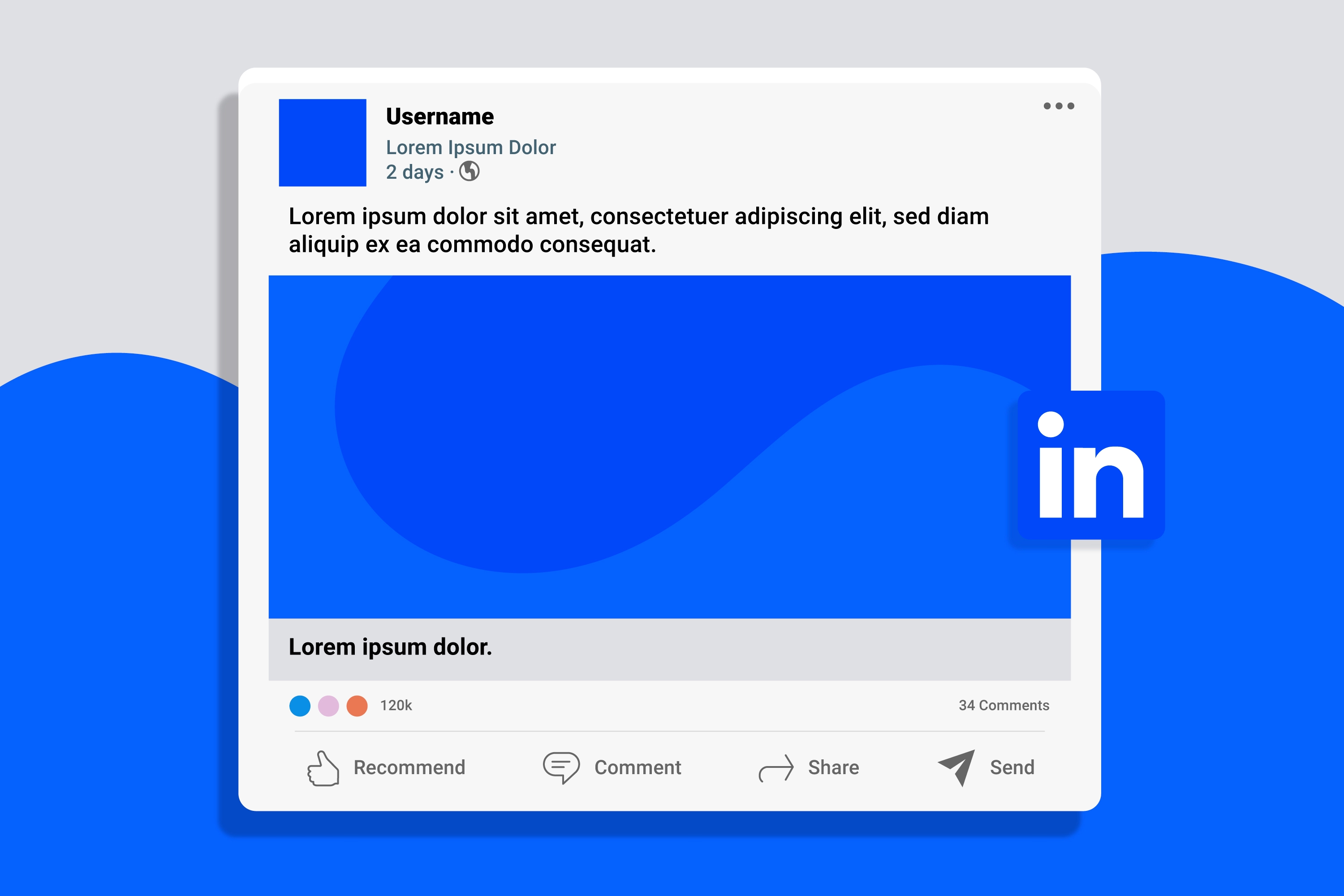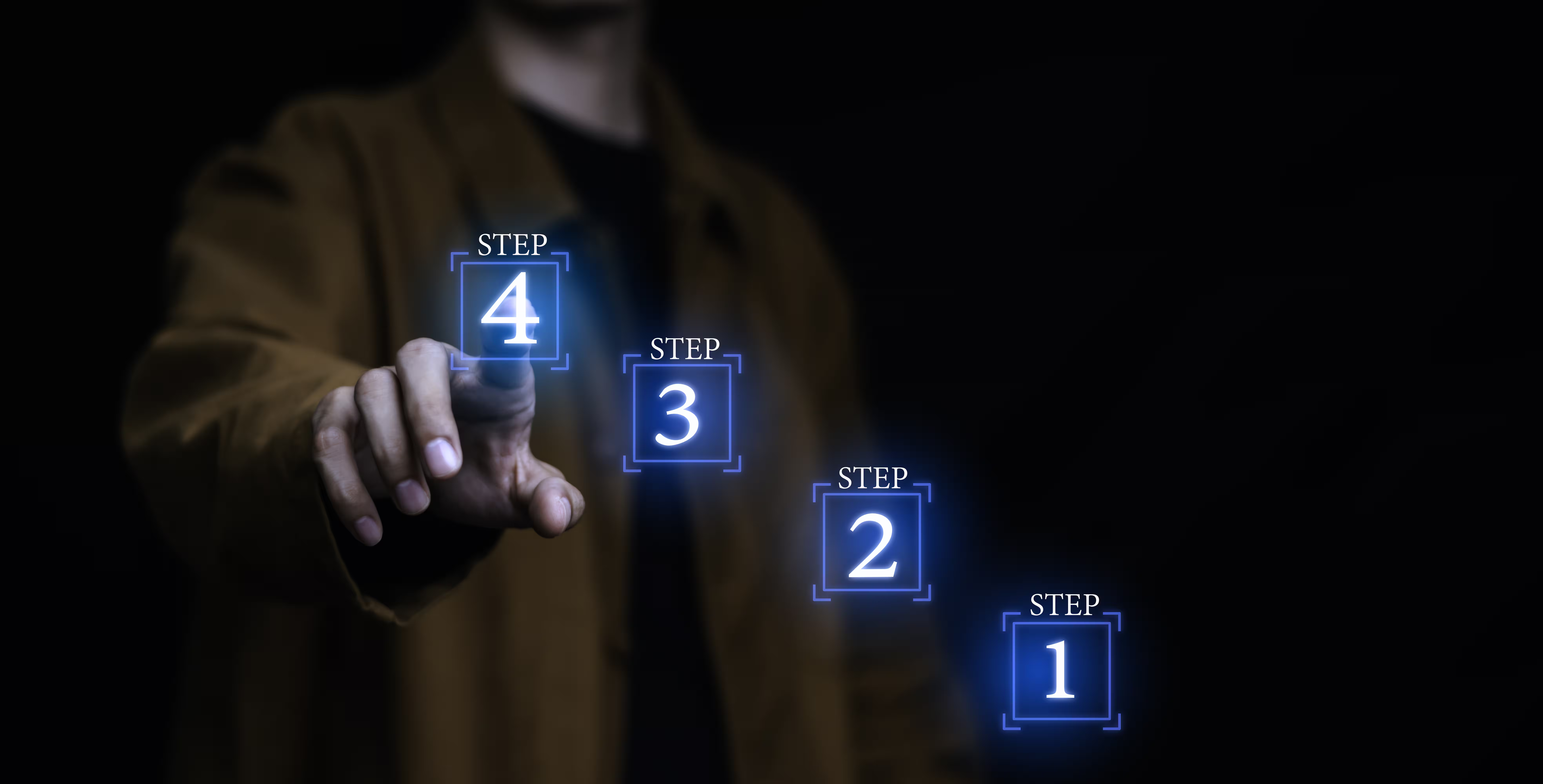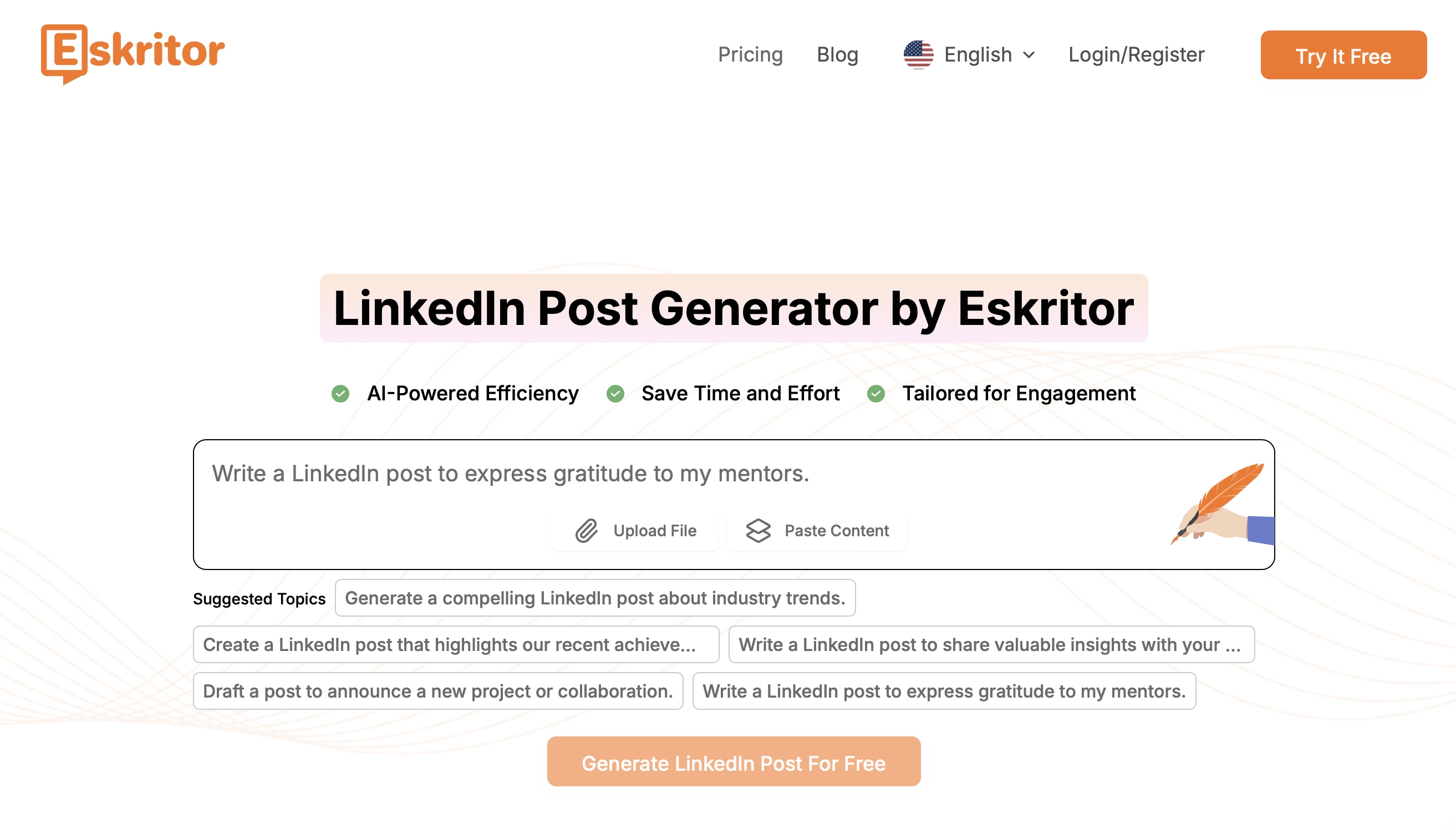
How to Write Ad Copy for LinkedIn Ads?
Generate the Best Content with AI in Seconds
Generate the Best Content with AI in Seconds
Ad copy for LinkedIn Ads requires specialized techniques that differ significantly from those used on other platforms. While other social channels often favor casual tone or broad appeal, LinkedIn demands a more refined approach—one that connects directly with B2B decision-makers. The challenge? Creating persuasive yet professional messaging that cuts through the noise and delivers measurable business outcomes.
The solution lies in a strategic, structured approach encompassing an effective marketing communication strategy. Here’s how to create LinkedIn ads that not only capture attention but convert. To truly grasp the essence of crafting persuasive copy, it's beneficial to understand what is direct response copywriting:
- Research Your Target Audience: Define roles, industries, and goals to tailor your message.
- Define Your Value Proposition : Highlight benefits in business terms with measurable outcomes.
- Draft Your Ad Copy : Combine research and value into clear, action-driven messaging.
- Refine and Optimize : Edit for clarity, test variations, and align with LinkedIn’s best practices.
What Are the LinkedIn Ad Formats and Requirements?
Before diving into copywriting techniques, it's crucial to understand LinkedIn's various ad formats and their technical requirements. Each format serves different marketing objectives and comes with specific character limitations that will shape your copywriting approach.
What Are the Types of LinkedIn Ad Formats?

LinkedIn provides multiple ad formats to help you reach your target audience effectively:
- Sponsored Content : Native ads appearing directly in the LinkedIn feed as single image ads, carousel ads, or video ads
- Sponsored Messaging : Personalized content delivered directly to users' LinkedIn inboxes via Message ads or Conversation ads
- Text Ads : Simple PPC or CPM ads appearing in the right rail or top banner on desktop
- Dynamic Ads : Personalized ads that adapt to each viewer, including Follower ads, Spotlight ads, and Job ads
What Are the Character Limits for LinkedIn Ad Copy?
Working within LinkedIn's parameters requires precision in your messaging. For Sponsored Content, keep introductory text under 150 characters, headlines under 70 characters, and descriptions under 100 characters. Message Ads allow longer form content with a 60-character subject line and up to 1,500 characters in the message body. Text Ads are much more restrictive, with just 25 characters for headlines and 75 for descriptions.
Every word must contribute meaningfully to your ad's objective, making concise LinkedIn ad copywriting skills particularly valuable. Understanding these constraints helps you design more effective LinkedIn ad campaigns from the start.
How to Create High-Converting LinkedIn Ad Headlines?

LinkedIn's professional environment demands a different approach to copywriting compared to other social platforms. The most successful LinkedIn advertising best practices balance professional language with engaging content while addressing specific business pain points. Before writing your next LinkedIn campaign, make sure your ad includes:
- Compelling Headlines : Grab attention with value-driven, professional phrasing.
- Engaging Descriptions : Deliver clear, benefit-focused copy that speaks to business pain points.
- Effective Calls-to-Action (CTAs) : Use specific, actionable CTAs that align with the buyer’s journey.
What Makes Headlines Capture Professional Attention?
The headline for LinkedIn ad copy must immediately communicate value within a professional context. Techniques for creating compelling LinkedIn headlines include:
- Incorporating specific numerical data to establish credibility
- Addressing recognized industry challenges or opportunities
- Posing relevant questions that prompt professional self-reflection
- Highlighting exclusive information or insights not available elsewhere
- Referencing current industry trends or developments
Examples of effective headline structures for LinkedIn ad copy include "5 Strategies That Increased B2B Conversions by 137%" or "Is Your Enterprise Security Infrastructure Missing These Critical Elements?" These approaches create immediate interest while maintaining professional credibility.
How to Structure LinkedIn Ad Descriptions?
After capturing attention with headlines, LinkedIn ad descriptions must deliver substantive value. The description section of LinkedIn ad copy should:
- Lead with the primary value proposition for the business audience
- Front-load benefits rather than technical features
- Maintain professional yet conversational language
- Address specific industry pain points or challenges
- Include verifiable proof points such as statistical results or case study references
The most effective ad copy for LinkedIn Ads uses descriptions to expand on headline promises with concrete business advantages. Descriptions should emphasize how the offered solution, resource, or opportunity specifically addresses professional challenges faced by the target audience.
What Makes an Effective LinkedIn Ad Call-to-Action?
The call-to-action in LinkedIn ad copy serves as the critical bridge between interest and action. Effective LinkedIn CTAs share several key characteristics:
- Specificity about what follows the click
- Value-focused language that emphasizes professional benefits
- Alignment with the appropriate buyer's journey stage
- Appeal to professional motivations like career advancement or efficiency
- Clear indication of the value exchange for the user's time investment
Instead of generic phrases like "Learn More," optimized LinkedIn ad copy uses specific CTAs such as "Download Industry Report," "Reserve Workshop Seat," or "Get Custom Assessment." These approaches clearly communicate the professional value awaiting the user after engagement.
How to Write LinkedIn Ad Copy?

Creating effective B2B ad copywriting for LinkedIn requires a systematic approach that can benefit from content repurposing. Following a structured process helps ensure your ads speak directly to your target professionals' needs and motivations.
Researching Your Target Audience
Effective LinkedIn ad targeting starts with understanding who you're trying to reach. Leverage LinkedIn's targeting options to define your audience by job titles, industries, company sizes, and professional interests. Create detailed professional personas that include day-to-day responsibilities, career aspirations, and decision-making authority. Research audience language patterns, including industry-specific terminology and content engagement patterns on relevant topics.
Understanding these elements helps you craft copy that feels personally relevant to your target professionals, significantly increasing engagement potential with the help of best blog writing tools.
Defining Your Value Proposition
With audience insights in hand, articulate exactly how your offering addresses their specific needs. Frame benefits in professional terms, focusing on career advancement, efficiency improvements, and strategic advantages. Quantify value whenever possible with specific metrics like "Reduce reporting time by 75%" or "Increase team productivity by 32%." Differentiate from alternatives by highlighting unique approaches, specialized expertise, or exclusive features.
The most compelling value propositions directly connect your offering to the professional outcomes that matter most to your audience.
Drafting Your Ad Copy
Now bring your research and value proposition together into actual ad content. Start with a messaging framework that includes your primary message, 3-5 supporting points, proof elements, and desired action. Create multiple versions of headlines, descriptions, and CTAs. In LinkedIn sponsored content, use second-person language, keep sentences concise, and consider using a problem-solution structure.
The initial drafting stage should focus on capturing key messages clearly. You'll refine and optimize in the next step.
Optimizing and Refining Your Message
Review and polish your draft copy to maximize impact within platform constraints. Edit ruthlessly for clarity and concision by eliminating redundant phrases and prioritizing active voice. Enhance scanability by ensuring the most important information appears first. Incorporate testing elements by planning A/B variations of headlines, value framings, and CTA approaches.
This refinement process transforms adequate ad copy into compelling messaging that drives action and improves your LinkedIn marketing strategy.
Can AI Tools Generate LinkedIn Ad Copy?

The complexity of creating effective ad copy for LinkedIn Ads makes this an ideal application for AI assistance. Advanced AI writing tools accelerate the creation process while maintaining professional quality standards.
How Does Eskritor Transform LinkedIn Ad Creation?

Eskritor's AI-powered content creation platform offers specific advantages for marketers writing LinkedIn ad copy. It provides LinkedIn-optimized prompts designed for various ad formats, pre-configured for character limits, and structured for maximum impact. Its custom tone and style settings help match your brand voice with adjustable formality levels for different industries. Eskritor also excels at generating multiple copy variations to accelerate testing, with headline variations, description alternatives, and CTA options.
These capabilities help marketers overcome common LinkedIn ad challenges, such as maintaining professionalism while engaging and working within tight character limits.
How to Measure LinkedIn Ad Copy Performance?
Creating effective ad copy for LinkedIn Ads requires ongoing measurement, analysis, and refinement. Establishing a systematic approach to tracking performance metrics enables continuous improvement over time.
What Key Metrics Should You Track?
Performance analysis for LinkedIn ad copy should focus on several critical metric categories:
Engagement metrics:
- Click-through rate (benchmarked against LinkedIn averages of 0.3-0.5%)
- Engagement rate for content interactions
- Social actions, including shares, comments, and reactions
- Attention metrics such as video view rates or carousel card interactions
Conversion metrics:
- Conversion rate from click to desired action
- Cost per conversion across different ad variations
- Lead quality assessment based on qualification criteria
- Attribution patterns showing ad impact within the broader journey
LinkedIn-specific quality indicators:
- Relevance score for ad quality assessment
- Audience expansion performance metrics
- Desktop versus mobile performance differences
- Ad frequency and fatigue indicators
These metrics provide a comprehensive understanding of how LinkedIn ad copy influences the entire conversion journey, enabling data-driven optimization decisions.
Conclusion
Creating compelling LinkedIn ad copy requires understanding the platform's unique professional environment and the specific needs of your target audience. Similarly, mastering how to write push notification texts can enhance engagement across different platforms. By following the structured approach outlined in this guide—from researching your audience to leveraging AI tools like Eskritor—you can develop compelling ads that drive engagement and conversions.
Remember that successful LinkedIn advertising is an iterative process. Continuously measure performance, test new approaches, and refine your messaging based on data. The most effective advertisers view each campaign as an opportunity to learn and improve, building a knowledge base of what works for their specific audience and offers.
Ready to elevate your LinkedIn ad copy? Try Eskritor today and streamline your entire creative process!
Frequently Asked Questions
The best tool to write high-converting LinkedIn ad copy is Eskritor. It helps marketers generate compelling headlines, CTAs, and professional messaging tailored to LinkedIn’s B2B audience. Eskritor also offers tone adjustments and A/B testing variations to optimize performance and boost engagement.
Sponsored Content has a 150-character limit for introductory text and 70 characters for headlines. Message Ads allow 60 characters for subject lines and 1,500 for message body. Text Ads are limited to 25-character headlines and 75-character descriptions.
Focus on engagement metrics (CTR, engagement rate), conversion metrics (conversion rate, cost per conversion), and LinkedIn-specific indicators like relevance score. Compare your CTR against LinkedIn benchmarks of 0.3-0.5% to gauge performance.
Effective LinkedIn headlines use specific data points, ask relevant questions, clearly state benefits, and focus on professional development or efficiency. Avoid clickbait and instead emphasize outcomes that matter to business professionals.
Create a structured testing framework that changes one variable at a time, starting with headlines (highest impact), then value propositions, and finally CTAs. Ensure tests run long enough to reach statistical significance and document all results systematically.





 Dubai, UAE
Dubai, UAE